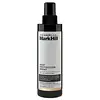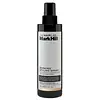What's inside
What's inside
 Key Ingredients
Key Ingredients

No key ingredients
 Benefits
Benefits

 Concerns
Concerns

 Ingredients Side-by-side
Ingredients Side-by-side

Alcohol Denat.
AntimicrobialWater
Skin ConditioningVp/Va Copolymer
Polyquaternium-11
Argania Spinosa Kernel Oil
EmollientPanthenol
Skin ConditioningSilicone Quaternium-22
PPG-3 Myristyl Ether
EmollientCananga Odorata Flower Oil
MaskingVanillin
MaskingCitrus Aurantium Dulcis Fruit Extract
MaskingCymbopogon Martini Oil
MaskingRicinus Communis Seed Oil
MaskingAmyris Balsamifera Bark Oil
MaskingCitrus Aurantium Bergamia Fruit Oil
MaskingJuniperus Mexicana Oil
MaskingMentha Viridis Leaf Oil
AstringentSalvia Sclarea Oil
MaskingGeranyl Acetate
PerfumingAnisaldehyde
MaskingCitrus Aurantium Dulcis Peel Oil
MaskingMaltol
MaskingArtemisia Pallens Flower Oil
MaskingDimethylhydroxy Furanone
MaskingEugenia Caryophyllus Oil
Pogostemon Cablin Leaf Oil
MaskingBetula Alba Oil
MaskingGeraniol
PerfumingLimonene
PerfumingLinalool
PerfumingAlcohol Denat., Water, Vp/Va Copolymer, Polyquaternium-11, Argania Spinosa Kernel Oil, Panthenol, Silicone Quaternium-22, PPG-3 Myristyl Ether, Cananga Odorata Flower Oil, Vanillin, Citrus Aurantium Dulcis Fruit Extract, Cymbopogon Martini Oil, Ricinus Communis Seed Oil, Amyris Balsamifera Bark Oil, Citrus Aurantium Bergamia Fruit Oil, Juniperus Mexicana Oil, Mentha Viridis Leaf Oil, Salvia Sclarea Oil, Geranyl Acetate, Anisaldehyde, Citrus Aurantium Dulcis Peel Oil, Maltol, Artemisia Pallens Flower Oil, Dimethylhydroxy Furanone, Eugenia Caryophyllus Oil, Pogostemon Cablin Leaf Oil, Betula Alba Oil, Geraniol, Limonene, Linalool
Alcohol Denat.
AntimicrobialWater
Skin ConditioningVp/Va Copolymer
Octylacrylamide/Acrylates/Butylaminoethyl Methacrylate Copolymer
Aminomethyl Propanol
BufferingCitrus Aurantium Dulcis Fruit Extract
MaskingPEG-12 Dimethicone
Skin ConditioningPanthenol
Skin ConditioningAmyris Balsamifera Bark Oil
MaskingCitrus Aurantium Bergamia Fruit Oil
MaskingMentha Piperita Oil
MaskingSalvia Sclarea Oil
MaskingPropylene Glycol
HumectantVaccinium Myrtillus Fruit Extract
Skin ConditioningSaccharum Officinarum Extract
MoisturisingCitrus Aurantium Dulcis Oil
MaskingCymbopogon Martini Oil
MaskingSorbitol
HumectantBambusa Vulgaris Shoot Extract
AntioxidantDryopteris Filix-Mas Leaf Extract
Skin ConditioningCitrus Limon Fruit Extract
MaskingAcer Saccharum Extract
Skin ConditioningPhenoxyethanol
PreservativeEthylhexylglycerin
Skin ConditioningLimonene
PerfumingLinalool
PerfumingAlcohol Denat., Water, Vp/Va Copolymer, Octylacrylamide/Acrylates/Butylaminoethyl Methacrylate Copolymer, Aminomethyl Propanol, Citrus Aurantium Dulcis Fruit Extract, PEG-12 Dimethicone, Panthenol, Amyris Balsamifera Bark Oil, Citrus Aurantium Bergamia Fruit Oil, Mentha Piperita Oil, Salvia Sclarea Oil, Propylene Glycol, Vaccinium Myrtillus Fruit Extract, Saccharum Officinarum Extract, Citrus Aurantium Dulcis Oil, Cymbopogon Martini Oil, Sorbitol, Bambusa Vulgaris Shoot Extract, Dryopteris Filix-Mas Leaf Extract, Citrus Limon Fruit Extract, Acer Saccharum Extract, Phenoxyethanol, Ethylhexylglycerin, Limonene, Linalool
Ingredients Explained
These ingredients are found in both products.
Ingredients higher up in an ingredient list are typically present in a larger amount.
Alcohol Denat. is an alcohol with a denaturant property. It is created by mixing ethanol with other additives.
This ingredient gets a bad rep because it is irritating and drying - mostly due to its astringent property. Astringents draw out natural oils in tissue, constricting pores and leaving your skin dried out.
However, alcohol denat. is not all that bad.
Due to its low molecular weight, alcohol denat. tends to evaporate quickly. One study on pig skin found half of applied alcohol evaporated in 10 seconds and less than 3% stayed on skin.
This also helps other ingredients become better absorbed upon application.
Studies are conflicted about whether this ingredient causes skin dehydration. One study from 2005 found adding emollients to propanol-based sanitizer decreased skin dryness and irritation. Another study found irritation only occurs if your skin is already damaged.
Small amounts of alcohol are generally tolerated by oily skin or people who live in humid environments.
The rule of thumb is if this alcohol is near the end of an ingredients list, it will probably not affect your skin much.
Also...
This ingredient has antimicrobial and solvent properties.
The antimicrobial property helps preserve products and increase their shelf life. As a solvent, it helps dissolve other ingredients.
Other types of astringent alcohols include:
Learn more about Alcohol Denat.This ingredient is used as a perfuming ingredient, or to add a fragrance. It is described to have a woody, balsamic, slightly sweet scent.
Citrus Aurantium Bergamia Fruit Oil is the oil from the bergamot orange. It is native to Italy.
This ingredient is used to add fragrance to products. It contains limonene, linalool, and linalyl acetate.
The term 'fragrance' is not regulated in many countries. In many cases, it is up to the brand to define this term. For instance, many brands choose to label themselves as "fragrance-free" because they are not using synthetic fragrances. However, their products may still contain ingredients such as essential oils that are considered a fragrance.
When used topically, Citrus Aurantium Bergamia Fruit Oil is a photosensitizer due to its furanocoumarins. Photosensitizers make the skin and eyes much more sensitive to sunlight. Photosensitizers are linked to skin cancer.
However, more cosmetics using Citrus Aurantium Bergamia Fruit Oil are removing the furanocoumarins.
Bergamot oil was also found to have anti-inflammatory, antibacterial and antifungal properties.
Learn more about Citrus Aurantium Bergamia Fruit OilCitrus Aurantium Dulcis Fruit Extract is more commonly known as the bitter orange. Native to Southeast Asia, this extract is commonly found in both cosmetics and foods.
The bitter orange possesses antibacterial and antioxidant properties.
It can also be mildly exfoliating due to the citric acid, an AHA.
Citrus fruits are rich in flavonoids, alkaloids, and vitamin C.
Learn more about Citrus Aurantium Dulcis Fruit ExtractCymbopogon Martini Oil is the volatile oil expressed from the herb palmarosa, Cymbopogon martini, Gramineae
Limonene is a fragrance that adds scent and taste to a formulation.
It's found in the peel oil of citrus fruits and other plants such as lavender and eucalyptus. The scent of limonene is generally described as "sweet citrus".
Limonene acts as an antioxidant, meaning it helps neutralize free radicals.
When exposed to air, oxidized limonene may sensitize the skin. Because of this, limonene is often avoided by people with sensitive skin.
The term 'fragrance' is not regulated in many countries. In many cases, it is up to the brand to define this term. For instance, many brands choose to label themselves as "fragrance-free" because they are not using synthetic fragrances. However, their products may still contain ingredients such as essential oils that are considered a fragrance.
Learn more about LimoneneLinalool is a fragrance and helps add scent to products. It's derived from common plants such as cinnamon, mint, citrus, and lavender.
Like Limonene, this ingredient oxidizes when exposed to air. Oxidized linalool can cause allergies and skin sensitivity.
This ingredient has a scent that is floral, spicy tropical, and citrus-like.
Learn more about LinaloolPanthenol is a common ingredient that helps hydrate and soothe the skin. It is found naturally in our skin and hair.
There are two forms of panthenol: D and L.
D-panthenol is also known as dexpanthenol. Most cosmetics use dexpanthenol or a mixture of D and L-panthenol.
Panthenol is famous due to its ability to go deeper into the skin's layers. Using this ingredient has numerous pros (and no cons):
Like hyaluronic acid, panthenol is a humectant. Humectants are able to bind and hold large amounts of water to keep skin hydrated.
This ingredient works well for wound healing. It works by increasing tissue in the wound and helps close open wounds.
Once oxidized, panthenol converts to pantothenic acid. Panthothenic acid is found in all living cells.
This ingredient is also referred to as pro-vitamin B5.
Learn more about PanthenolSalvia Sclarea Oil is a volatile oil obtained from the Clary Sage, Salvia sclarea L., Lamiaceae
We don't have a description for Vp/Va Copolymer yet.
Water. It's the most common cosmetic ingredient of all. You'll usually see it at the top of ingredient lists, meaning that it makes up the largest part of the product.
So why is it so popular? Water most often acts as a solvent - this means that it helps dissolve other ingredients into the formulation.
You'll also recognize water as that liquid we all need to stay alive. If you see this, drink a glass of water. Stay hydrated!
Learn more about Water